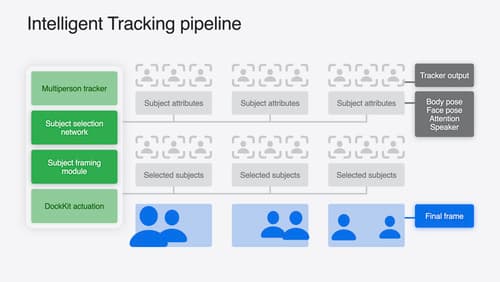why is object tracking beneficial
Asked on 2024-08-02
1 search
Object tracking is beneficial for several reasons, particularly in the context of spatial computing and augmented reality (AR) as presented at WWDC:
-
Enhanced User Experience: Object tracking allows for the precise placement of virtual content on real-world items, creating a more immersive and interactive experience. For example, in educational apps, 3D visualizations can be anchored to physical instruments, enhancing the learning experience (Create enhanced spatial computing experiences with ARKit).
-
Efficiency in Enterprise Applications: In enterprise settings, object tracking can be used to follow guided instructions for complex tasks, such as machine repairs. By tracking a wide variety of tools and parts, it helps technicians by highlighting relevant objects as needed during the repair process (Introducing enterprise APIs for visionOS).
-
Intelligent Subject Tracking: Advanced algorithms and machine learning enable intelligent subject tracking, which can identify and focus on the most relevant subjects in a scene. This is particularly useful in video production, where it can automatically determine the most important individuals to track based on factors like movement and speech, reducing the need for manual intervention (What’s new in DockKit).
-
Precision and Control: Object tracking provides refined information about the position and orientation of tracked items, allowing for precise control over virtual content. This is crucial for applications that require exact placement and interaction with real-world objects (Explore object tracking for visionOS).
-
Ease of Implementation: Apple provides tools like CreateML to simplify the process of creating reference objects and training machine learning models for object tracking. This makes it easier for developers to integrate object tracking into their apps (Explore object tracking for visionOS).
By leveraging these capabilities, developers can create more sophisticated and user-friendly applications that seamlessly blend the virtual and physical worlds.

Introducing enterprise APIs for visionOS
Find out how you can use new enterprise APIs for visionOS to create spatial experiences that enhance employee and customer productivity on Apple Vision Pro.

Explore object tracking for visionOS
Find out how you can use object tracking to turn real-world objects into virtual anchors in your visionOS app. Learn how you can build spatial experiences with object tracking from start to finish. Find out how to create a reference object using machine learning in Create ML and attach content relative to your target object in Reality Composer Pro, RealityKit or ARKit APIs.

What’s new in DockKit
Discover how intelligent tracking in DockKit allows for smoother transitions between subjects. We will cover what intelligent tracking is, how it uses an ML model to select and track subjects, and how you can use it in your app.
